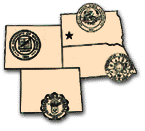Department of Animal Science
Date of this Version
December 2001
Abstract
Pinus ponderosa or western yellow pine (Pinnace) is widely distributed in the U.S., but is most abundant in the Western U.S. and Western Canada. In the late 1920’s cattle stockmen and ranchers first suspected that ingestion of needles and buds from ponderosa pine trees caused an abortion. Original claims of ponderosa pine needles (PPN) being an abortifacient were discounted because of the many other known causes of abortions such as infectious diseases (brucellosis, leptospirosis), phosphorus and Vitamin A deficiencies. It wasn’t until 1952 that McDonald provided the first definitive evidence for a direct effect of a toxin in PPN needles in the induction of abortion in beef cows. In the years that followed, all of the extraneous causes of PPN abortion listed above were eliminated in a series of well-designed experimental studies. Premature parturition in cattle due to ingestion of PPN is now known to be a major economic problem in the Western U.S. and Western Canada, with losses as high as 50% in some herds (Lacey et al., 1988). Further, Pinus ponderosa is the only species of Pinus in the Western U.S. or Western Canada shown to cause abortion in cattle. Both green and dry needles appear to cause abortion, and bark and branch tips also appear to contain abortifacient principles. In the paper to follow, the factors mediating the susceptibility of pregnant cows to PPN-induced abortion, the physiologic changes precipitating the abortion and our current understanding of the causative factor (s) will be discussed. Also, a summary of our current abilities to predict/prevent PPN induced abortions will be presented.


Comments
Published for Proceedings, The Range Beef Cow Symposium XVII December 11, 12, and 13, 2001 - Casper, Wyoming.